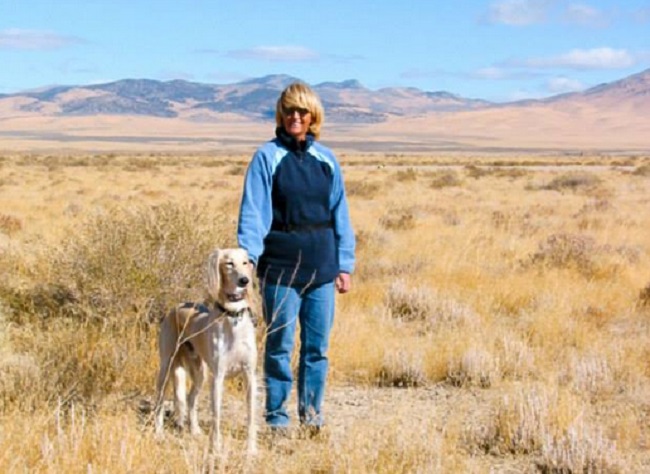When serious illness strikes, the cost of hospital visits, missed work days, medications and treatments not covered by insurance or health plans can add a crippling financial toll to an already stressful situation.

“Cancer never gives you a break,” said Jenny Hawkyard, who has been helping her Aunt Lin since her diagnosis with ovarian cancer in February of 2013.
“It plunges you into this big deep hole of horribleness.”
Jenny, 30, who lives in Newmarket, Ont., is the only family member in Canada of her aunt Lin, who lives in nearby Beeton.
“You never know how long the next round is,” Jenny said of her aunt’s treatment. “You don’t know when she’s going to be feeling better or if there’s a light at the end of the tunnel.”
She’s felt helpless to stand by and not be able to help the pain; then, a condensed round of treatment left Lin unable to work.
READ MORE: B.C. cancer cases to increase 57 per cent by 2030: report
“We were like, well you’re not physically going to be able to work. And that’s when we both sort of despaired as to what to do.”
Jenny started a campaign on GoFindMe, an online fundraising website, to help her aunt financially.
“If that hadn’t been an option for me, a self-employed person, I would have been in very dire straights,” said Lin.
Lin, 68, is single, has her own home, and a business breeding Salukis.
In a bittersweet twist of fate, Lin had recently purchased illness insurance, after the death of her brother — Jenny’s father — from cancer.
While the insurance has helped, the coverage is limited: her plan offers $100 a day for chemotherapy treatments, but not for other medical commitments such as CT scans. And $100 per day doesn’t replace the wages many workers can expects for a day’s work.
While many of her drugs have been covered under the Ontario Health Insurance Plan (OHIP), there have been times she was faced with choosing to suffer instead of pay out of pocket for an expensive drug.
In one circumstance, she was prescribed an anti-nausea medication at $250 a pill, with multiple pills required leading up to a treatment. The problem was, she was told it wasn’t covered.
“And I said, well you know what, I guess I’ll be sick,” said Lin. “I can’t afford that.”
In that case she managed to eventually get coverage for the pill, but others aren’t always so lucky.

Get weekly health news
Organizations work to fill the gaps
“It’s really shocking, because while people are going through chemotherapy or radiation, they also discover they’re standing in financial quicksand,” said Gabriel Miller, director of public issues for the Canadian Cancer Society.
“Thousands of Canadians end up living with the fear that they’re going to go broke, almost from the moment that they get their diagnosis.”
“Whether it’s a diagnosis of cancer or some other serious disease.”
Approximately 196,900 Canadians will be diagnosed with cancer in 2015, according to the statistics.
Miller says 40 per cent of cancer patients leave work for as long as six months following a diagnosis, primarily for treatment.
He said about 60 per cent of cancer patients report a drop in income following a diagnosis.
“Not only are they facing huge new costs, from prescription drugs to hospital parking, but they don’t have the kind of financial support that the need and may have expected would be available to them,” said Miller.
READ MORE: Viruses that can destroy cancer? Canadians leading the way in new research
Almost half of workers don’t have any private disability insurance, Miller added, and are left to rely on public financial support programs.
“Those programs were designed for a very different time,” said Miller, “when a disease like cancer was often just a death sentence, and people didn’t live long enough to require more financial support.”
He said the current statistics show 63 per cent of people survive for five years or longer after a cancer diagnosis.
The Canadian Cancer Society has a two-pronged approach for improving the lot of those with cancer: working with governments to improve programs and on-the-ground support for people through their illness.
Crowdsourcing for survival
The fundraising effort has raised $20,000 for Lin in the last eight months, a cushion that has allowed her to focus on her treatment.
“That has made the difference, knowing that she doesn’t have to work,” said Jenny.
“She’s hoping that she’ll live another five years, in which she wants to keep her business afloat, keep her clients.”
Jenny said that in the time before such online crowdsourcing pages, a labour-intensive fundraiser might have netted perhaps $1,000. She said the site has allowed her to reach a huge circle of people, from as far away as Japan, and gather the funds.
RELATED: Family struggles after GoFundMe fund for Ontario man killed in crash emptied
“That site really provided the means for me to access all the people, for them to easily donate, for me to thank them, it’s incredible,” said Jenny.
Lin said she’s been “overwhelmed” by people’s generosity.
“It’s just been mind-boggling and very life-affirming,” said Lin. “Suddenly realizing how much you’ve impacted on other people cause they’ve turned around and wanted to help you.”
She said it’s “sobering” to see the number of campaigns online for families and individuals in desperate financial need due to illness.
In Ontario alone, GoFundMe campaigns have raised more than $12.5 million for 50,000 campaigns since its launch.
Lin now has two types of cancer — peritoneal carcinomas and carcino sarcoma — and was recently told she might only have six months to live, as her tumours are inoperable and her treatment is currently palliative.
She’s set to begin an experimental treatment, and said she’s still got some fight left in her.
“I’m a not-ready-to-die 68-year-old,” said Lin. “I’m not going yet.”
WATCH: Husband builds replica Eiffel Tower after wife diagnosed with lung cancer
But first, she’ll be planning an adventure.
“I said, before I die I want to go to Yosemite. And once again, some remarkable friends got together… and got me enough money for an airfare to California so I could go.”
“And it may be the only item off my bucket list I get to complete.”
Federal support for families
Employment Insurance sickness benefits provide a maximum of 15 weeks of coverage for a person who can’t work due to sickness, injury or quarantine.
There are also federal funds available for those who must miss work to support a loved one who is “gravely ill”. The Employment Insurance Compassionate Care Benefits will cover up to three people for a combined total of six weeks within a 26-week period.
The government will pay out 55 per cent of an individual’s average insurable earnings, to a maximum yearly amount. In 2015 the maximum amount is $49,500, which works out to a maximum of $524 per week.
READ MORE: Should Employment Insurance be extended for cancer patients?
That $524 is considered taxable income, so applicable federal, provincial and territorial taxes will be deducted from that amount.
While there are other factors that can change the amount you will receive, like if the family has children or is low income, benefit payments will never be more than $524 a week.
Last month Global News asked Employment and Social Development Canada why EI sickness benefits are capped at 15 weeks and whether there was a need to extend coverage for cancer patients.
The department did not answer these questions directly but a spokesperson forwarded its most recent EI Monitoring and Assessment Report. That report found that for the 336,800 EI sickness benefits claims that were made in 2013/2014, the average length of claim came in under the 15 week cap at 9.7 weeks.
With files from Heather Yourex-West



Comments